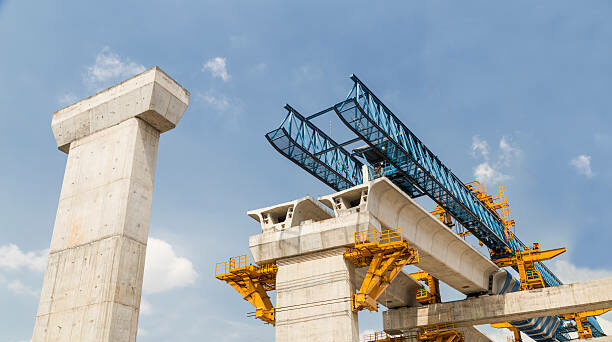A few months ago, the Paris Summit for a “New Global Financial Pact” was announced to be held in June 2023. So far, the Summit has been met with mixed reviews, with the aim to deliver innovative approaches to the world’s climate and development challenges.
But, with only 7 years left to reach the UN’s Sustainable Development Goals (SDGs), there is still a long way to go if the targets are to be met, and whether the Summit will mobilise and deliver the real, concrete commitments needed remains to be seen, especially since previous broad commitments, such as the US$100 billion per year of climate finance for developing countries and US$100 billion in SDR reallocation remain unfulfilled.
In fact, our forecasting shows just how huge these financing gaps are. Over the last half a decade, we’ve witnessed a plethora of economic shocks – from trade conflicts, the COVID-19 pandemic and the Russia-Ukraine War – all of which have impacted the continent’s ability to fund major infrastructure projects for long-term development. Indeed, during COVID-19, we estimated that African governments spent US$130 billion to address COVID-19’s economic and health effects.
In this month’s infographic, we lay out the latest findings from our forecasting analysis on the infrastructure gaps for four African countries – Ethiopia, Zambia, Kenya and Chad – and analyse just how much more finance is needed for these countries to meet the SDGs. The reason for selecting these countries is that they have all – or have been rumoured to in the case of Kenya – applied to the Common Framework and are classed as “high” or “in debt distress” by the IMF and World Bank’s Debt Sustainability Analysis. We also include Ghana, from our past forecasting in May 2022, in our comparison table.
Let’s take Ethiopia as an example. We found that to reach the SDGs, the total investment cost from 2021 to 2030 stands at USD 235.6 – USD 348.4 billion (low – high-cost estimate). In terms of average annual spend, to reach the SDGs Ethiopia would need to spend USD 23.6 – USD 34.8 annually, or 17% – 25% of GDP! When we break this down into sectors, road infrastructure will cost around USD 143 billion (accounting for 41% of the total infrastructure need), followed by rail at USD 70 billion (20% of total) and energy at USD 66 billion (18.9% of total).
Overall, with the UN 2030 SDGs in mind, each country’s infrastructure investment needs multiply in varying proportions. Annual investment needs will range from USD 3.2-USD 34.8 billion, meaning that the equivalent of 9.7-49% of GDP will need to be set aside each year solely for infrastructural development!
Yet, if this were to happen, as our analysis shows, countries would likely exceed arbitrary debt risk assessment categories of “moderate”, “high” or “in distress” – the problems of which we have covered in other reports.
While our analysis is static and “worst case”- however, we think that under the SDGs scenario the infrastructure investments would themselves generate GDP – as infrastructure are growth-producing assets – so the ratios may not be as severe. Nevertheless, it is vital to be prepared for this possibility if infrastructure investment remains low.
So, with the Paris meeting coming up, what can African leaders, policymakers and other development stakeholders be pushing for to deliver on these needs? We have two key suggestions:
- Our figures reinforce the fact that most African countries do not have “too much debt” but too little debt. In Paris, it will be crucial to encourage a shift in mindsets and analytical tools about this issue – such as the IMF and World Bank Debt Sustainability Assessments or credit rating agency assessments, and focus minds on the “positives” of debt for development, on the need for a massive scale up of cheap, concessional finance for infrastructure in particular. The SDGs and Agenda 2063 cannot be met without increased spending and sufficient access to concessional finance to do so.
- Our figures also reinforce the need for debt payments suspension or restructuring for countries that are facing fiscal space constraints, as well as the urgent reallocation of special drawing rights (SDRs) to the African continent to ease fiscal space and enable continued infrastructure investment – for example through the African Development Bank (AfDB) or the Liquidity and Sustainability Facility (LSF). The precedent created where debt restructuring discussions and SDR reallocations discussions drag-on for over a year is a weak blueprint.
It’s clear the SDGs need finance – and a lot of it! Yet, without fundamental reform to the constraints embedded within the international financial system, African countries will continue to face barriers to concessional finance. Reform is needed, now.

**
To find out how Development Reimagined can support you, your organisation or Government to review key economic response policies to the COVID19 crisis, the Russia/Ukraine war and other shocks please email the team at clients@developmentreimagined.com.
Special thanks go to Rugare Mukanganga and Jade Scarfe for their work on the graphics, collecting/analysing the underlying data and sharing this accompanying article.
The data was collated from a range of sources including: government websites and media reports, IMF and World Bank data and Statista. Our methodology is entirely in-house, based on analysis of economic growth, inflation and other trends.
June 2023


